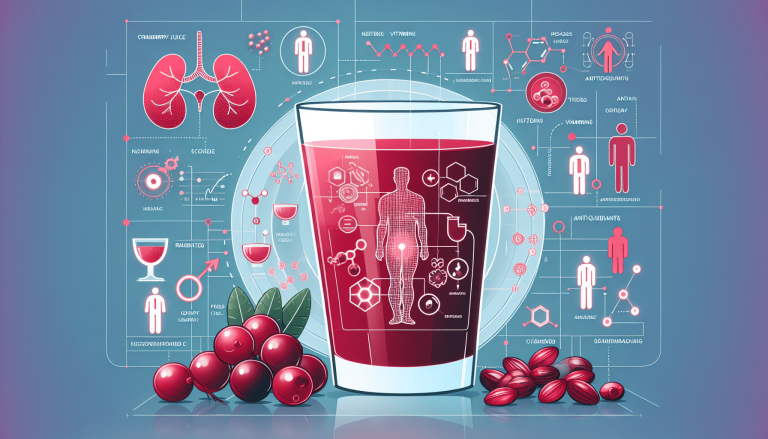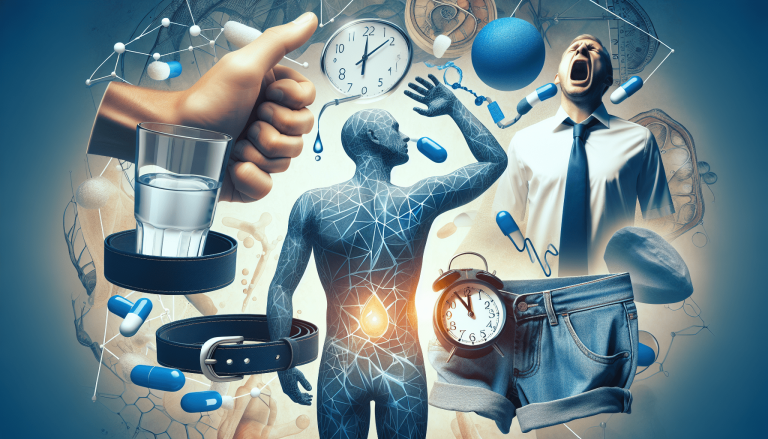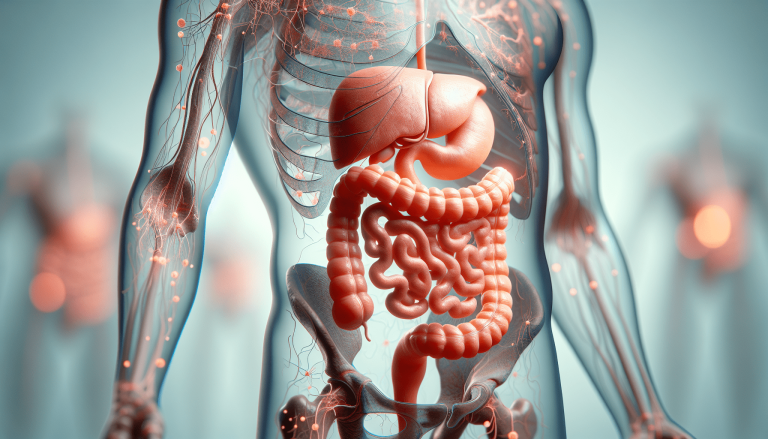What Does A Swollen Prostate Feel Like?
So you’ve been wondering, what does a swollen prostate feel like? It’s a question that many men ask themselves at some point in their lives. Well, imagine a persistent urgency to urinate, combined with a weak urine stream, and a feeling that your bladder is never fully empty. Perhaps you also experience discomfort or pain during urination or ejaculation. These are just a few of the common symptoms that may indicate a swollen prostate. But don’t worry, in this article, we’ll explore the various sensations and signs that can help you identify if you might be dealing with a swollen prostate.

Overview of the Prostate
The prostate is a small gland located just below the bladder in men. It is an integral part of the male reproductive system and plays a crucial role in the production of semen. The prostate gland surrounds the urethra, which is the tube responsible for carrying urine from the bladder out of the body. This positioning makes the prostate gland susceptible to enlargement or swelling, which can lead to various health issues and discomfort.
Maintaining a healthy prostate is essential for overall well-being. It ensures proper urinary and sexual functions, allowing men to lead a comfortable and fulfilling life. Learning about the location and functions of the prostate gland, as well as the significance of its health, is vital for every man.
Location and functions of the prostate gland
The prostate gland is positioned just below the bladder and in front of the rectum. It is approximately the size and shape of a walnut, but can vary in size as men age. The primary function of the prostate gland is to produce and store the seminal fluid that nourishes and protects sperm. During ejaculation, the muscles of the prostate help propel semen into the urethra, ready for release.
Importance of a healthy prostate
A healthy prostate is crucial for the proper functioning of the male reproductive system. Besides its role in the production of seminal fluid, the prostate gland also plays a vital part in urinary health. When the prostate is healthy and not swollen, it does not exert pressure on the urethra, ensuring a smooth flow of urine. However, when the prostate becomes swollen, it can cause a variety of urinary and sexual symptoms that can greatly impact a man’s quality of life. Hence, taking care of the prostate is important to maintain overall health and well-being.
Understanding Swollen Prostate
A swollen prostate, also known as benign prostatic hyperplasia (BPH), is a condition characterized by the abnormal enlargement of the prostate gland. This enlargement is noncancerous but can cause significant discomfort and disrupt normal urinary and sexual functions. Understanding the causes and risk factors associated with a swollen prostate is crucial for early detection and prompt management.
Definition and causes of prostate swelling
Prostate swelling occurs when the cells of the prostate gland multiply abnormally, leading to an increase in size. While the exact cause of prostate swelling is unknown, hormonal changes and aging are believed to contribute to its development. Hormonal imbalances, particularly changes in testosterone and estrogen levels, can lead to prostate enlargement. Additionally, as men age, the likelihood of developing a swollen prostate increases. Other factors, such as inflammation and genetics, may also play a role in prostate swelling.
Risk factors for developing a swollen prostate
Several factors increase the risk of developing a swollen prostate. Age is the most significant risk factor, with the condition being more prevalent in men over the age of 50. Hormonal imbalances, particularly an increase in estrogen levels, can also contribute to prostate swelling. Obesity, family history of BPH, and certain medical conditions, such as heart disease and diabetes, can increase the risk as well. Lifestyle factors, such as a sedentary lifestyle and poor diet, may also play a role in the development of a swollen prostate.
Symptoms of a Swollen Prostate
Recognizing the symptoms associated with a swollen prostate is crucial for early detection and timely treatment. The symptoms can vary from person to person, but generally fall into three categories: urinary symptoms, sexual symptoms, and pain and discomfort.
Urinary symptoms
One of the most common symptoms of a swollen prostate is changes in urinary habits. These symptoms occur due to the obstruction of the urethra by the enlarged prostate. Some common urinary symptoms associated with a swollen prostate include:
- Frequent urination: You may find yourself needing to urinate more frequently, often interrupting daily activities or disturbing sleep patterns.
- Urinary urgency: You may experience a sudden and intense urge to urinate, making it difficult to hold back the urine.
- Weak urine flow: The flow of urine may become weaker and less forceful, making it feel like it takes longer to empty the bladder.
- Difficulty starting and stopping urination: Initiating urination may become challenging, and stopping the flow of urine might require additional effort.
- Incomplete bladder emptying: You may have a persistent feeling of not fully emptying the bladder after urination, leading to a sensation of discomfort and the need to urinate again shortly after.
Sexual symptoms
A swollen prostate can also cause sexual symptoms that can greatly impact a man’s quality of life. These symptoms often manifest due to the pressure the enlarged prostate places on the surrounding structures involved in sexual function. Some common sexual symptoms associated with a swollen prostate include:
- Erectile dysfunction: You may experience difficulties achieving or maintaining an erection firm enough for sexual intercourse.
- Decreased libido: Your desire for sexual activity may diminish, leading to a decrease in sexual interest or drive.
- Pain or discomfort during ejaculation: Ejaculation may become painful or uncomfortable due to inflammation or pressure on the prostate gland.
Pain and discomfort
In addition to urinary and sexual symptoms, a swollen prostate can also cause pain and discomfort in various areas. These symptoms are often localized around the pelvic region and can extend to the lower back and rectum. Some common pain and discomfort symptoms associated with a swollen prostate include:
- Pelvic pain: You may experience persistent or intermittent pain in the pelvic area, which can range from mild to severe.
- Lower back pain: Discomfort in the lower back can be a result of the enlarged prostate placing pressure on the surrounding nerves and tissues.
- Rectal pain: Pain in the rectum or discomfort during bowel movements can occur when the swollen prostate pushes against the rectal wall.
- Sensation of heaviness in the pelvic area: You may feel a sense of pressure or heaviness in the pelvic region, which can be bothersome and affect daily activities.
Complications of a Swollen Prostate
If left untreated, a swollen prostate can lead to various complications that can further impact a man’s health and well-being. Recognizing and addressing these complications promptly is essential to prevent further complications and ensure proper management of the condition.
Urinary tract infections
The obstruction caused by a swollen prostate can increase the risk of developing urinary tract infections (UTIs). When urine is unable to flow freely and bacteria accumulate in the urinary tract, it can lead to infection. Symptoms of a UTI include a frequent urge to urinate, pain or burning during urination, cloudy or bloody urine, and pelvic discomfort. If left untreated, UTIs can spread to the kidneys and result in more severe complications.
Bladder stones
When the urine remains stagnant in the bladder due to an enlarged prostate, it can lead to the formation of bladder stones. These stones are hard mineral deposits that can cause pain, recurrent urinary tract infections, and difficulties with urination. The presence of bladder stones in conjunction with a swollen prostate can complicate treatment options and require additional intervention.
Acute urinary retention
Acute urinary retention is a severe complication that occurs when the bladder becomes completely unable to empty, leading to sudden and painful retention of urine. This condition can be incredibly distressing and requires immediate medical attention. Acute urinary retention can necessitate emergency procedures to relieve the obstruction and restore normal bladder function.
Kidney damage
In severe cases, a swollen prostate can lead to kidney damage. The accumulation of urine in the bladder and the potential backflow into the kidneys can cause infection and damage to these vital organs. Kidney damage can have serious long-term implications for overall health and may require specialized treatment.

Diagnosis of a Swollen Prostate
If you are experiencing symptoms that indicate a swollen prostate, it is essential to consult a healthcare professional for an accurate diagnosis. The doctor will follow a series of diagnostic measures to determine the cause of the symptoms and tailor the treatment accordingly.
Medical history and physical examination
The first step in diagnosing a swollen prostate involves taking a thorough medical history and conducting a physical examination. The doctor will inquire about the symptoms you are experiencing and any relevant medical conditions. A physical examination may include a rectal examination to assess the size, shape, and consistency of the prostate gland.
Digital rectal exam
A digital rectal exam (DRE) is a procedure where the doctor inserts a gloved, lubricated finger into the rectum to feel the prostate gland. This examination provides valuable information regarding the size, shape, and texture of the prostate. The DRE helps the doctor determine if the prostate is enlarged and if there are any abnormalities or irregularities.
Prostate-specific antigen (PSA) test
A prostate-specific antigen (PSA) test measures the level of PSA in the blood. PSA is a protein produced by the prostate gland, and elevated levels can indicate various prostate conditions, including a swollen prostate or prostate cancer. While an elevated PSA level does not necessarily mean you have prostate cancer, it can help guide further diagnostic testing and treatment decisions.
Urine flow study
A urine flow study measures the speed and volume of urine flow during urination. This test provides valuable information about the urinary function and can help determine the degree of obstruction caused by the enlarged prostate. By analyzing the urine flow pattern, your healthcare provider can assess the severity of your symptoms and guide treatment options.
Transrectal ultrasound
A transrectal ultrasound involves the use of a small probe inserted into the rectum to obtain images of the prostate gland. This imaging technique allows the doctor to visualize the size, shape, and consistency of the prostate in greater detail. It can help identify any abnormalities and provide valuable information for diagnosis and treatment planning.
Prostate biopsy
In some cases, a prostate biopsy may be necessary to rule out prostate cancer. A prostate biopsy involves taking small tissue samples from the prostate gland for further examination under a microscope. This procedure is usually performed under local anesthesia and can help determine if cancerous cells are present in the prostate.
Treatment Options
The treatment options for a swollen prostate depend on various factors, including the severity of symptoms, the impact on quality of life, and the overall health of the individual. The primary goal of treatment is to relieve symptoms, improve urinary flow, and prevent complications. Treatment options range from conservative approaches to more invasive interventions.
Watchful waiting
In cases where the symptoms are mild and not significantly impacting daily life, watchful waiting may be recommended. This approach involves regular monitoring of the condition without immediate interventions. Your healthcare provider will assess your symptoms periodically and may recommend lifestyle changes or medications if symptoms worsen.
Medications
Medications are commonly prescribed to manage the symptoms of a swollen prostate. These medications work by reducing the size of the prostate gland, relaxing the muscles around the bladder and prostate, and improving urine flow. Some commonly prescribed medications include alpha blockers, 5-alpha reductase inhibitors, and combination medications. Your healthcare provider will determine the most appropriate medication based on your individual circumstances.
Minimally invasive procedures
Minimally invasive procedures are an alternative treatment option for a swollen prostate when medication alone is not providing sufficient relief. These procedures aim to reduce the size of the prostate or relieve the pressure on the urethra, improving urinary function. Some minimally invasive procedures include transurethral microwave therapy, transurethral needle ablation, and laser therapy. These procedures offer the advantage of shorter recovery times compared to traditional surgery.
Surgery
Surgery may be recommended for severe cases of a swollen prostate or when other treatment options have not provided satisfactory results. There are several surgical options available, including transurethral resection of the prostate (TURP), minimally invasive surgeries like green light laser therapy, and open prostatectomy. Your healthcare provider will assess your condition and recommend the most suitable surgical procedure based on your specific circumstances.
Prevention and Self-Care
While the development of a swollen prostate may not be entirely preventable, adopting a healthy lifestyle and practicing self-care can help reduce the risk and manage the symptoms of the condition. Here are some preventive measures and self-care practices you can incorporate into your daily routine:
Maintaining a healthy lifestyle
Maintaining a healthy lifestyle is key to overall well-being, including prostate health. This involves regular exercise, avoiding tobacco products, limiting alcohol consumption, and managing stress levels. Staying physically active and maintaining a healthy weight has been shown to reduce the risk of developing a swollen prostate.
Regular exercise
Engaging in regular physical activity, such as brisk walking, swimming, or cycling, can have significant benefits for prostate health. Exercise helps maintain a healthy weight and improves blood circulation, reducing the risk of prostate problems. Aim for at least 30 minutes of moderate-intensity exercise most days of the week.

Maintaining a balanced diet
Eating a balanced diet rich in fruits, vegetables, whole grains, and lean proteins is essential for prostate health. Include foods that are high in antioxidants, such as berries, tomatoes, and green leafy vegetables. Limit the consumption of processed foods, red meat, and foods high in saturated fats. Drinking plenty of water can also help maintain good urinary health.
Avoiding triggers
Identify and avoid triggers that can worsen the symptoms of a swollen prostate. These triggers can include caffeine, spicy foods, and alcohol. It is important to listen to your body and take note of any foods or beverages that seem to aggravate your symptoms. Making necessary adjustments to your diet can help manage and alleviate symptoms.
In conclusion, a swollen prostate can have a significant impact on a man’s well-being, affecting urinary and sexual functions, as well as causing pain and discomfort. Recognizing the symptoms associated with a swollen prostate is crucial for early detection and prompt treatment. Lifestyle modifications, medications, minimally invasive procedures, and surgery are the various treatment options available depending on the severity of symptoms. By adopting a healthy lifestyle and practicing self-care, men can take proactive steps to reduce the risk and manage the symptoms of a swollen prostate, ultimately improving their overall quality of life.
Additional Resources

Grab a piece of paper and a pen right now… Because you’re just a paragraph away from finally escaping the annoying symptoms of an enlarged prostate…
By using this easy-to-follow and simple recipe:
Here’s all the ingredients you need for it:
- 10oz of water
- Boil this for 2 minutes
- Add just a spoon of…..
Read the full article and see full recipe here:
Easy Homemade Recipe To Fix Your Prostate In Less Than 10 Seconds







